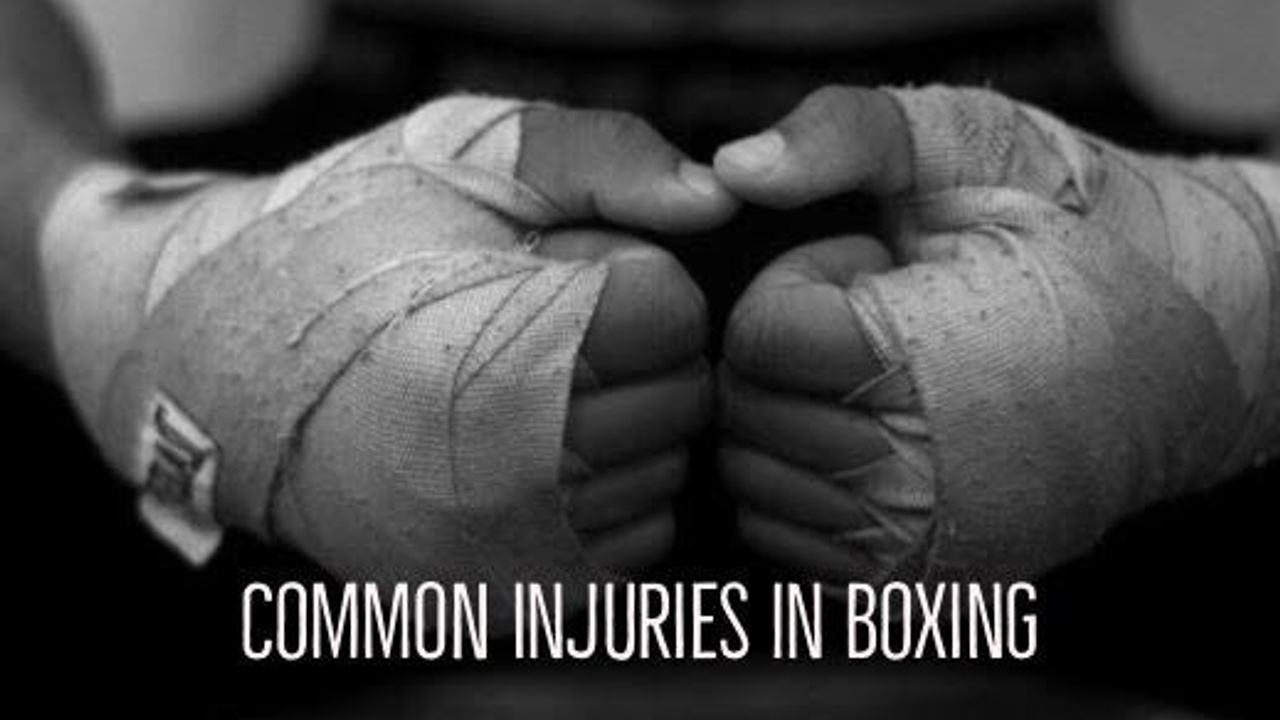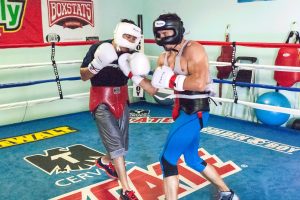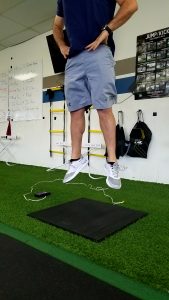
Common Injuries in Boxing…and How We Can Help
by Jerry Arias, M.S, CSCS, USAW
The Dark Side of Boxing
Working with professional boxers over the past few years has given me a different perspective on strength & conditioning. Working with these athletes has been some of the most rewarding things I have done in my career. They truly are “all in” and all have dreams of becoming a world champion. All my past and current athletes are extremely driven, and their work ethic is second to none. However, sometimes this can also be a detriment to their success because Common Boxing Injuries can arise if we are not “training smart” and only focused on “training hard.”

Having worked with both young athletes just starting their professional careers, along with veteran athletes fighting for world titles, these experiences have allowed me to learn from the athletes themselves, and their respective boxing coaches.
Unfortunately, one thing all boxers share in Common Boxing Injuries.
At the end of the day, this is a combat sport, and injuries are part of it and will continue to be.
 However, as strength and conditioning professionals, it is our ethical duty to observe, study, and learn where these injuries are occurring, and do our best to build a training program in which we can minimize both the severity, and the frequency of these injuries. It is therefore vital to be in constant communication with both your athlete, and their boxing coach and have a “open door” policy in which the athlete can be honest and open about how he or she is feeling.
However, as strength and conditioning professionals, it is our ethical duty to observe, study, and learn where these injuries are occurring, and do our best to build a training program in which we can minimize both the severity, and the frequency of these injuries. It is therefore vital to be in constant communication with both your athlete, and their boxing coach and have a “open door” policy in which the athlete can be honest and open about how he or she is feeling.
Many times, an athlete might hide/conceal a current injury and not want to speak up in fear that we as S & C coaches will “make the workout easier” because of their injury. Therefore, it is vital that we make it clear to the athlete that we can always adjust and/or modify their training around the given injury and not lose the intensity/effort of the training session if it calls for that day.
 Gathering insight from both the athletes and their respective boxing coaches, and through my experience, we can see there are injuries that are more common than others.
Gathering insight from both the athletes and their respective boxing coaches, and through my experience, we can see there are injuries that are more common than others.
Two common occurring injuries in boxing take place at the hand and foot.
- sprains
- tears
- bruising
- bone fractures
The sport of boxing in unique in that when boxing athletes are young professionals, they have the potential to be in the ring anywhere from 4-7 fights in a given year. There is also the possibility in which they might be taking on a fight with only a few weeks’ notice, therefore they need to be prepared year-round.
This could mean they are sparring 2-3 days/week, training with their boxing coach on non-sparring days, doing strength and conditioning work 2-3 days/week and completing longer runs, pool work, etc. with not much “out of training camp” time.
 With this much training, it is only a matter of time where the athlete will start to experience some minor injuries that can turn into major injuries.
With this much training, it is only a matter of time where the athlete will start to experience some minor injuries that can turn into major injuries.
These injuries, many of which are “overuse” injuries, need to be addressed from both a preventative and reactive manner. You can have the “perfect plan” but if a boxer delivers a punch at an awkward angle, the hand will experience some sort of injury.
So, this leads us to figuring out how we as strength & conditioning professionals can create some sort of “baseline” testing in which we can objectively compare following an injury where that given athletes are in respect to their pre-injury status.
We must understand that these are just measures in force/strength production and not “impact” tests. Meaning they don’t reflect how the athlete might still experience pain or discomfort despite returning to baseline values prior to the injury on these tests.
Therefore, there is a limitation on how we can interpret these findings.
But just like any other test, it is an objective measurement that gives us information to use.
2 Testing Protocols >>
Below are two simple testing protocols that give us an athletes specific force/strength production at the sites of injury we talked about earlier.
We use a Just Jump Mat to measure vertical jump performance and a hand-held grip device in which it measures strength when an athlete clinches their fist.
 1. Grip Strength
1. Grip Strength
Using a hand-help grip strength measure device (both left and right hand).
Measurements of grip or “clinched fist” strength can be useful in that hand/wrist/forearm injuries can occur frequently in the sport of boxing.
If we as strength & conditioning professionals can track an athlete’s strength on this test prior to them sustaining an injury we can re-test them after the injury has occurred and see where that athletes are at relative to their pre-injury status. This value can provide both the athlete, and their boxing trainer some insight as to what type of training intensity and volume they should be taking part in.
When the athletes are close to their pre-injury baseline value we can infer they might be ready to get back to their normal training program.
This device is extremely affordable and practical (inexpensive & takes seconds to use). Try and get new baseline values established every few months to adjust based on new levels of strength of the athlete.

2. Vertical Jump
Vertical Jump Mat (we do counter-movement, depth and static jumps, and Single leg jumps) Taking measurements directly related to the lower extremity can be useful if an athlete sustains a foot, ankle, knee or hip injury. This can occur during times of “road work” (sprained/rolled ankle), sparring or during an actual boxing match.
Same as with the hand injury, if we can establish baseline values for jump performance with the athlete, we can see what their current status in relation to their jump performance and decide what is the best training practice at this level of their recovery.
 If the athlete is far away from baseline values, we might want to refrain from using plyometrics at this given time. When the athlete is close to pre-injury baseline values, and they don’t experience pain or discomfort, this is when we will decide to return to our planned training program and not be afraid of re-injury occurring.
If the athlete is far away from baseline values, we might want to refrain from using plyometrics at this given time. When the athlete is close to pre-injury baseline values, and they don’t experience pain or discomfort, this is when we will decide to return to our planned training program and not be afraid of re-injury occurring.
In conclusion, we as professionals need to consider how to find objective ways to establish some sort of “return to play” measurements. In no way am I challenging what a doctor or physical therapist would recommend, instead try to work in conjunction to their recommendations and give the athlete and coach the best possible game plan to move forward with the athlete’s preparation.
Keep in mind these are just “tools” and there are limitations to them.
Please interpret the results with these given tests above cautiously and
determine what is best for your athlete/s.
Thank you for giving me the opportunity to share my thoughts.
Coach Jerry Arias
Titan Edge Athletics
Follow Jerry on Instagram --> @coach_jerry_




